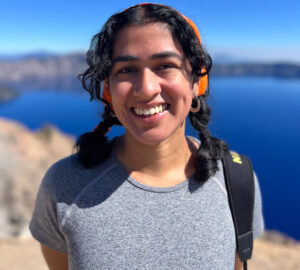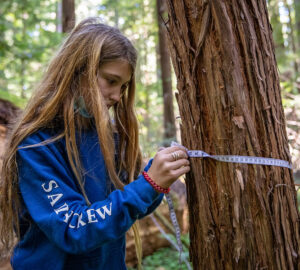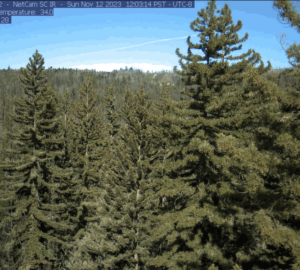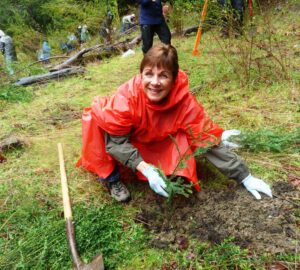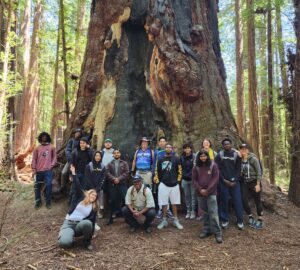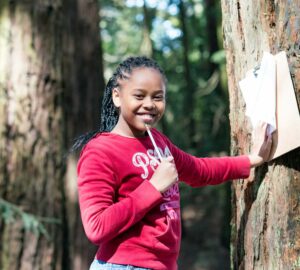Get to know some of the women conservationists at Save the Redwoods League
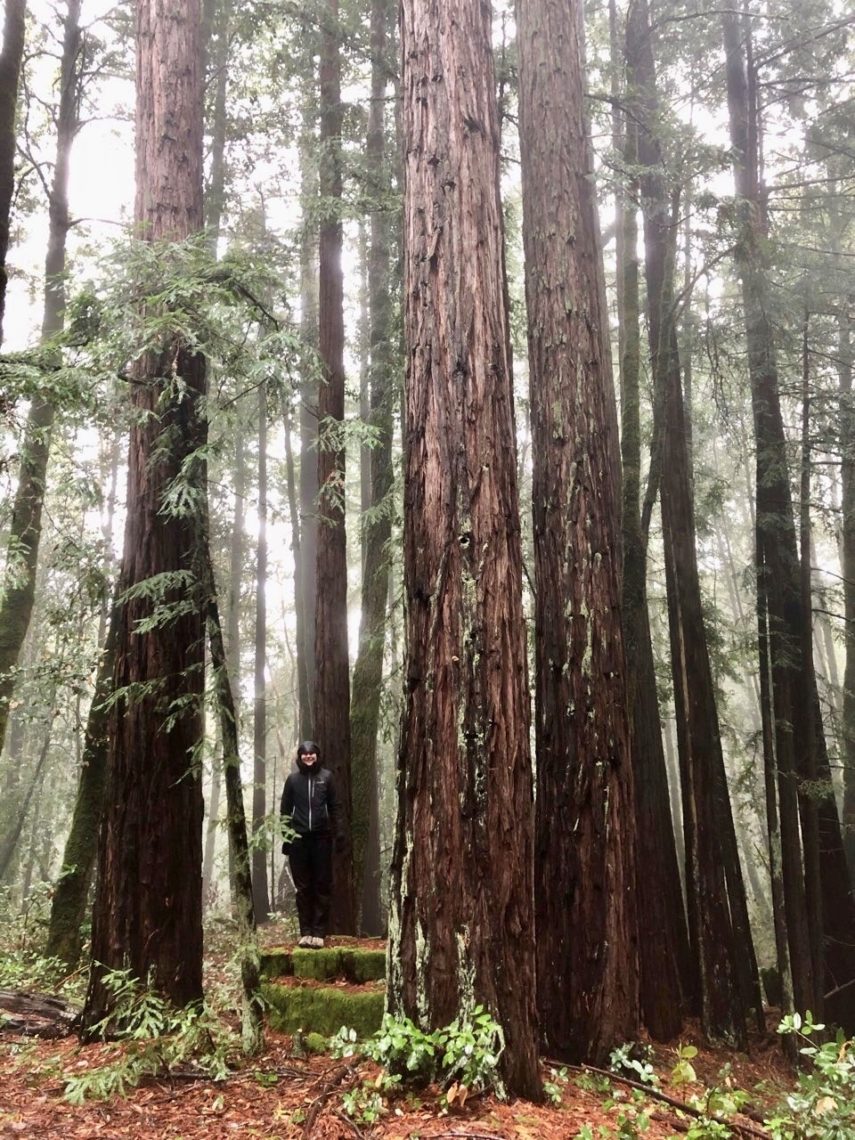
In honor of Women’s History Month, we chatted with some of the League’s conservation program staffers who are making history protecting and restoring redwood forests and connecting people to welcoming and resonant redwoods experiences. Keep scrolling to learn about these powerful women and the inspiration behind their work.
Becky Bremser, Director of Land Protection
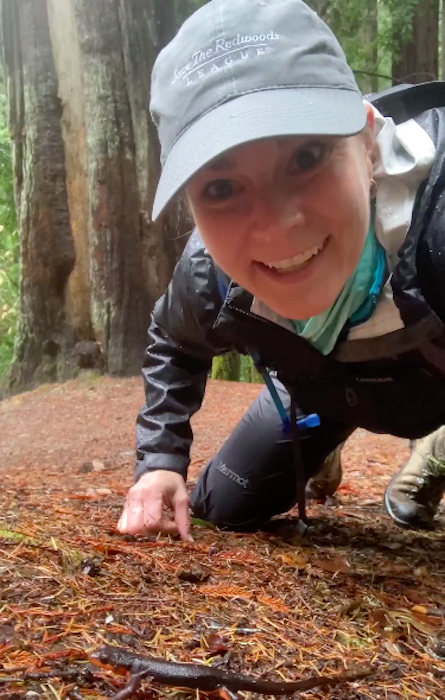
Did you have an aha moment that made you realize you wanted to work in conservation?
I distinctly remember reading “The Tragedy of the Commons” by Garrett Hardin in college. I think that article made an impression and it started to make sense to me that meshing environmental protections with economics and sociology was going to be one way move the needle. I have found doing conservation real estate has been a wonderful way for me to implement that idea.
What’s the weirdest/funniest thing that’s ever happened on the job?
Oh boy! I once earned the nickname “Sledgehammer” based off one event. It was a property that was going to become a new county park. However, before the county was willing accept the property, a concrete slab that was encroaching approximately 1 foot over the property line needed to be dealt with. Well, I will just leave you with the fact that I solved the issue. The offending encroachment was removed, the deal closed, and the park is spectacular.
Who’s your conservation hero?
The list is long. I personally have several people who have inspired me—but I think as of late, I am excited about Secretary of the Interior nominee Debra Haaland.
Leslie Parra, Outreach Program Manager
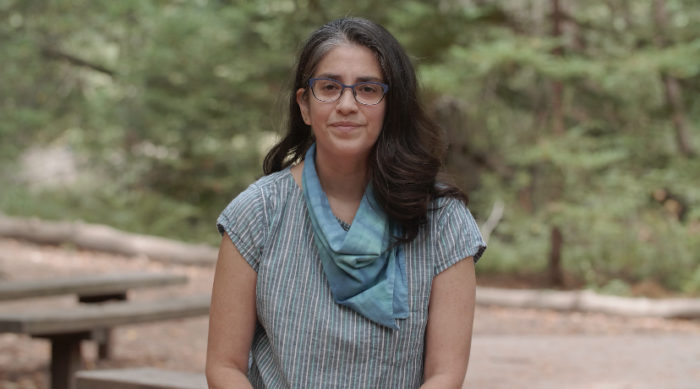
Did you have an aha moment that made you realize you wanted to work in conservation?
I was fortunate to access nature growing up in Ecuador and North Carolina—two places that offered different environments and fostered my curiosity for living things. Over the years, I developed a deep appreciation for the haven that Pachamama (Mother Earth) has provided me, and I believe we have a reciprocal, caring relationship. It was during college that I had my aha moment, when I learned about the field of conservation and realized there was a major that encouraged stewardship with scientific research—which is my jam!
What’s the weirdest/funniest thing that’s ever happened on the job?
In grad school I studied the genetic population of the endangered giant kangaroo rat (Dipodomys ingens) of the Carizzo Plain in Central California. They are nocturnal animals, and to study them I had to change my internal clock and become active at night. I used night vision lenses to follow them—it’s the coolest thing to be able to see in the dark. I saw other wildlife out there like the kit fox. This change in behavior allowed me to develop and adapt my senses of smell and hearing.
What’s your dream for the future of conservation?
I’d like to see the field of conservation continue to build bridges with communities that are burdened with barriers to public lands, and consider the needs of all who depend on those lands. I dream of conservation that considers community as a key contributor to stewardship and a solution to address climate change and environmental racism.
Laura Lalemand, Forest Ecologist
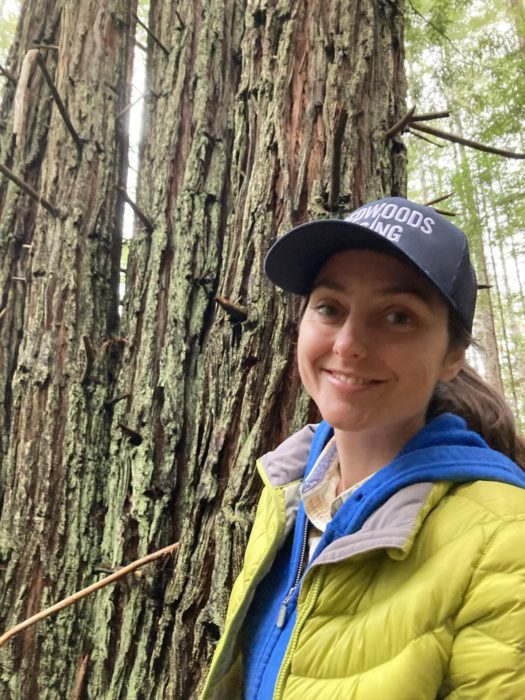
Who’s your conservation hero?
The Lorax ;) Early on, I was greatly influenced by the writing and conservation work of Aldo Leopold. Later, I found invaluable mentorship from my undergraduate advisor and forest ecology professor Dr. Andrew Barton. Most recently, I’ve been moved and inspired by the work of Robin Wall Kimmerer.
What’s your favorite book?
One of my very favorite books to escape in is a collection of awe-inspiring essays called “Things That Are” by Amy Leach.
What song feels like the redwood forest?
“Bron-Yr–Aur“ by Led Zeppelin.
What’s your dream for the future of conservation?
I dream of a future when each and every one of us feels connected and able to contribute to conservation in our own meaningful ways. A time where conservation fully encompasses the land and the people who are deeply interconnected with the land. A future where conservation is fully recognized as a global priority for not only the health of our forests, but also for the health of all of us.
Jessica Carter, Director of Parks & Public Engagement
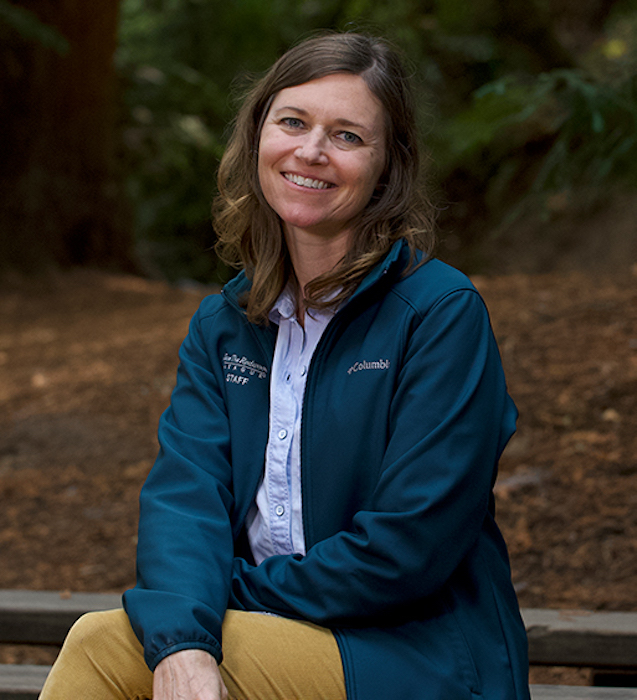
What’s the weirdest/funniest thing that’s ever happened on the job?
A month into my job at Save the Redwoods League, I went on my first project site visit in Humboldt. Our visit ended up coinciding with a huge winter storm, and I was wholly unprepared. My fantastic colleagues made a pit stop along the way so I could buy slickers and rubber boots. Shortly after we got on site, the rain started pouring, lightening streaked the sky, and it hailed on us. After a couple of hours in the weather, I couldn’t feel my hands and I was so cold I couldn’t think straight—let’s just say I was wondering what I had gotten myself into! But I survived and I’m a wee bit more physically and mentally prepared for anything that might get thrown my way on site visits now.
What song feels like the redwood forest?
Music and the redwood forest are two of my favorite things. One song that perfectly captures a road trip and camping in the redwoods with my family is “Big Sur” by Jack Johnson. But, being Women’s History Month, I definitely want to highlight a female artist, and Nina Simone’s incredible version of “Feeling Good” comes to mind. The lyrics and her delivery are powerful, representing resilience and hard-earned wisdom—all evocative of the redwood forest, and the singer herself.
What’s your dream for the future of conservation?
The human relationship with nature is at the core of my dream for the future of conservation, which I could talk about for days! But most simply, my hope is that ALL people feel welcome and able to connect with the outdoors in ways that are personally meaningful and that lend to healthy communities and a healthy environment. And, of course, that every Californian gets to experience the coast redwood and giant sequoia forests.
Linnea Hardlund, Giant Sequoia Forest Fellow
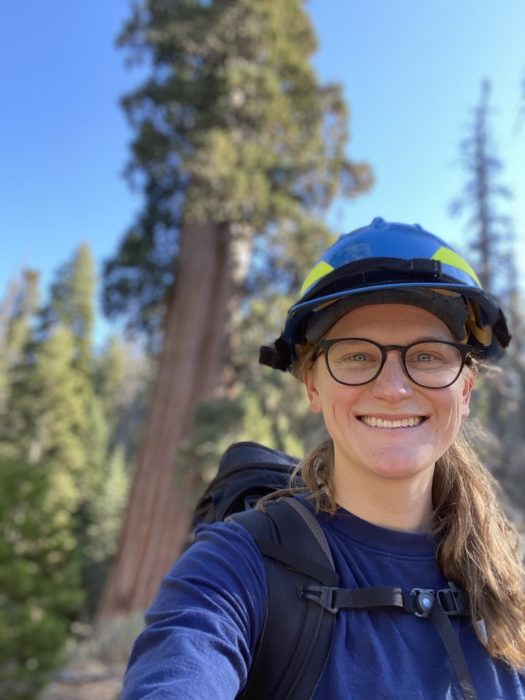
What’s the weirdest/funniest thing that’s ever happened on the job?
I was part of a field crew of three and we were going to collect data in a remote part of Yosemite National Park for eight days. We were going extra light this trip to account for the added weight of field gear, so we all decided to eat dehydrated soup with soy protein every night. Turns out we were camping by a lake that was overrun with invasive bullfrogs. They would sit on our water filter every evening when we’d filter water, and we’d see hundreds of eyes after dark staring at us. The first night the soup tasted a little funky, but we were tired and hungry so we didn’t think much of it. The next day after we had filtered lake water and left camp for fieldwork, we all noticed our water tasted strange, and figured out it tasted like the smell of bullfrogs. GROSS. Luckily, we had all brought Nuun hydration tablets to provide electrolytes for our long hikes during the heat of the summer. The Nuun tablets helped mask the taste a bit, but for the week we embraced drinking “froggy Nuun water and froggy soup.” We were also doing post-fire fieldwork, so we would come back to camp covered in charcoal and have to wash off in the froggy pond water. By the end of the week, we had been drinking bullfrog water and smelled like frogs. Boy, were we glad to jump in a lake with fresher water at the end of the week.
Who’s your conservation hero?
Easily Robin Wall Kimmerer. Currently, Braiding Sweetgrass is my favorite book. Robin’s words and perspective are so inspiring, and I love the way she challenges norms within society and within science and academia. I am going to listen to the audiobook after I finish reading just to listen to her narrate her story.
What’s your dream for the future of conservation?
That’s a big question. My dream is that we integrate tribes and the Indigenous community back into land management in their ancestral territories to help rebuild cultural identity for self and community with the land among the land’s original caretakers. It is hard to understand how to “restore” an ecosystem when an integral part of that ecosystem continues to be left out. I also hope that we can continue to expand the conservation community to represent more diverse perspectives and people, especially within an exceptionally diverse state like California. Additionally, my dream is that we can move beyond stagnant knowledge and implement the work that we know needs to be done. In reading post-colonization archival reports of giant sequoia, specifically, it was well-documented as early as the 1950s that giant sequoia groves, and the Sierra Nevada mixed–conifer forest in general, needed fire to thrive and survive. Many of the descriptions of the Sierra Nevada landscape without fire in the 1950s still match what the forest looks like today. As the decades have passed, we have been faced with more and more barriers as the unknown effects of climate change, drought mortality, and fire suppression continue to challenge the previous understanding of how the ecosystem functions and what effects we’ll see on the landscape from management actions.
Deborah Zierten, Education & Interpretation Manager
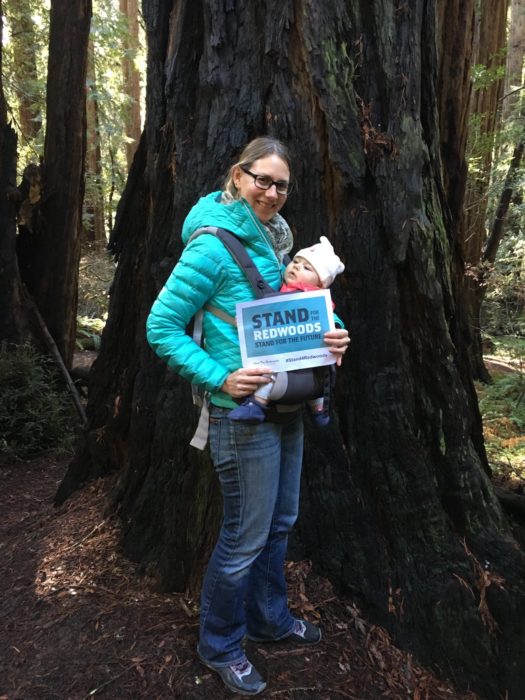
What’s the weirdest/funniest thing that’s ever happened on the job?
When students are free to explore and be themselves in the outdoors, you never know what you are going to hear them say or experience. They are so creative with their questions and their discoveries, and really humorous with their play. During one field trip, some fourth-grade students made up a “hiking in the redwoods song” and just started singing it. I recorded it on my phone and still listen to it sometimes. Some of the best moments while teaching were seeing students get super muddy in the forest and just loving it. The smiles and laughter from them were priceless.
What’s your favorite book?
One of my favorite books is Prodigal Summer by Barbara Kingsolver. I love a lot of her books, how she weaves in nature with fictional experiences.
What’s your dream for the future of conservation?
My dream for the future of conservation is the next generation. Success in redwoods conservation means seeing a diversity of faces and ages of youth exploring redwood forests and parks on a regular basis. I see schools and teachers incorporating redwoods field trips into their learning every year and teaching about relevant, local resources that students can connect to. I would love to see an expansion of our redwood parks and preserves to provide these in–person opportunities to the next generation. And I see the parks of the future as welcoming to all and telling the whole story of redwoods conservation.


